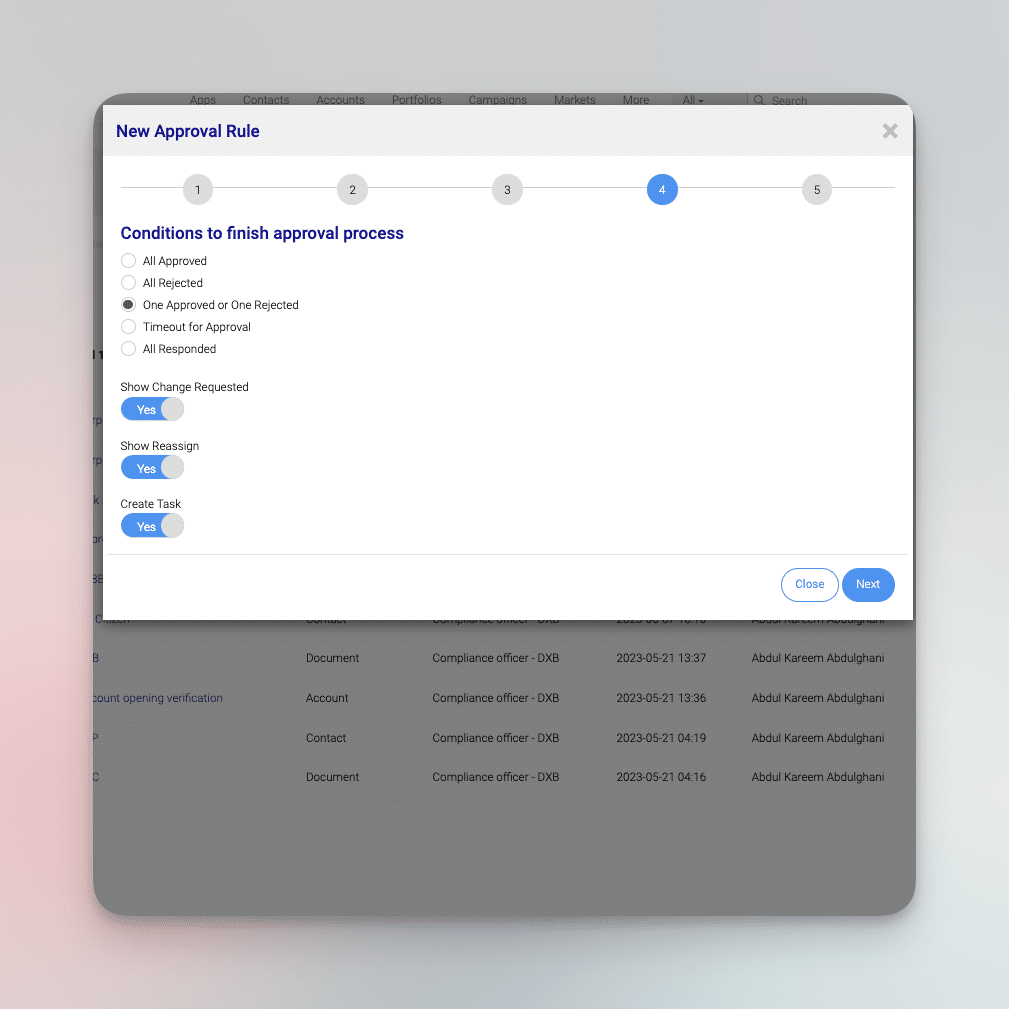Streamlining Your Approval Process for Bank Transactions: A Step-by-Step Guide

If you’ve ever wondered how banks approve loans, open accounts, or verify transactions, this article will provide an in-depth look into the process. Financial institutions utilize strict evaluation criteria, including creditworthiness, debt-to-income ratio, and compliance checks, to ensure responsible banking practices.
According to Investopedia, a strong credit score significantly improves approval chances for loans, as it reflects a borrower’s reliability. Regulatory compliance, such as anti-money laundering (AML) checks, plays a crucial role in preventing financial fraud, as highlighted by the Financial Times.
Additionally, modern banks leverage AI-driven underwriting systems and biometric verification tools, such as those offered by companies like Veriff, to streamline decisions while maintaining security. These technologies enhance efficiency, ensure compliance with global banking regulations, and improve the customer experience by expediting approvals.
In this article, we’ll explore the key steps, regulations, and innovations shaping bank approvals today.
InvestGlass offers a flexible and powerful solution for approval process. We have pre-built mockups for financial institutions.

Key Takeaways
- The bank approval process is crucial for ensuring transaction compliance, maintaining control over banking operations, and adhering to legal and regulatory frameworks.
- Streamlining approvals through clear criteria, automation, and leveraging technologies like InvestGlass improves efficiency, reduces human error, and maintains compliance in banking operations.
- Continuous monitoring and improvement of the approval process using Key Performance Indicators (KPIs) are essential for adapting to changing business needs and maintaining operational efficiency.
Understanding the Bank Approval Process

The process of approval at a bank plays a crucial role in its operations. It ensures that:
- transactions meet the requisite standards
- control is kept over banking procedures
- it acts as an important marker for adherence to legal and regulatory requirements
- compliance with internal policies as well as external legal mandates is upheld.
Role of Approvals in Banking
Approvals in banking are crucial for the functioning and decision-making within financial institutions. They act as a protective measure, confirming that transactions proceed only after fulfilling specific standards. Such protocols maintain the integrity of bank operations while maintaining adherence to legal and regulatory compliance requirements.
Types of Bank Transactions Requiring Approval
The process for approving bank transactions encompasses a variety of activities, such as:
- Creating new bank accounts
- Executing significant wire transfers
- Organizing mortgage agreements
- Establishing individual retirement plans
This approvals process is crucial in maintaining regulatory compliance and control.
Transactions not specifically listed but considered sensitive also require prior approval from senior management. This step guarantees compliance and control are upheld while managing additional related documents appropriately.
Implementing Best Practices for Streamlined Approvals
As we move into the digital age of banking, employing technology to streamline the approval process becomes increasingly critical. It is vital for clear communication methods to be in place to ensure that everyone involved understands how these processes work, and utilizing technological tools can assist in accomplishing this.
By implementing automated systems within our approval procedures, we not only boost both efficiency and effectiveness, but also foster improved collaboration while minimizing mistakes.
Establishing Clear Approval Criteria
The foundation of the approval process rests upon having definitive criteria for approval. This ensures a uniform evaluation of each transaction against a stable benchmark, promoting consistent decision-making throughout. An explicit and clear-cut framework for approvals not only reduces the likelihood of biased decisions, but also speeds up the overall process of obtaining approval by mitigating risk factors associated with ambiguity.
Leveraging Automation Tools
The use of automation tools is crucial for streamlining the approval process, as they accomplish several key objectives.
- Minimize the duration dedicated to mundane banking activities
- Boost general efficiency and output
- Diminish errors caused by manual intervention
- Provide uniform, dependable decision-making which upholds adherence to sector-specific regulatory standards.
Managing the Loan Approval Process

Managing the loan approval process requires a meticulous balance of assessing creditworthiness, ensuring compliance, and managing risk. During the loan approval process at banks, several aspects are considered such as:
- The borrower’s credit history
- Their cash flow capabilities
- The availability and quality of collateral
- The character of the borrower
- The thoroughness and accuracy of documentation provided
Improved collaboration between bank staff members—especially those on the credit team—and customers facilitated by digital platforms leads to increased operational effectiveness and a better experience for customers.
Key Steps in the Loan Approval Process
Initiation of the loan approval process starts when a borrower submits a request for credit. This involves several crucial steps, including:
- Rigorous examination of the borrower’s credit background
- In-depth scrutiny of cash flow
- Assessment of available collateral
- Meticulous evaluation of all pertinent documents related to the loan
Precision and careful consideration are vital throughout this phase.
Such an exacting method ensures that prior to concluding on the approval, the bank gains comprehensive insight into every aspect of an applicant’s financial state. This includes their complete financial statements such as balance sheet and income statement, alongside existing debt responsibilities.
Ensuring Compliance and Risk Management
In the loan approval process, maintaining compliance with legal and regulatory frameworks is crucial. The implementation of automation technology plays a key role by providing an audit trail that facilitates internal and external review for adherence to these standards.
Automation leverages algorithms based on data to enhance risk management within the loan approval process while ensuring that industry regulations are met.
Enhancing the Marketing Approval Process in Banking

Marketing plays a crucial role in attracting and keeping customers within the banking sector. Banks count on a streamlined marketing approval process to maintain consistency with brand guidelines and comply with regulatory requirements.
By adopting an effective marketing approval process, banks minimize the risk of mistakes and ensure that they disseminate only current or approved iterations of their marketing materials.
Streamlining the Review and Approval Workflow with InvestGlass
InvestGlass has revolutionized the management of business approval processes. The automation of marketing approval workflows by InvestGlass not only expedites these processes, but also provides a transparent audit trail. Its platform for online proofing facilitates immediate collaboration and commentary, merges seamlessly with video hosting platforms, and meticulously monitors various document iterations to guarantee their correct application in marketing initiatives.
Fostering Collaboration Among Stakeholders
Enhancing collaboration among all involved parties is vital for optimizing the marketing approval process. Banks can adopt systematic frameworks like RACI to delineate responsibilities clearly, aiding in more effective teamwork throughout the approval phase.
Using templates provides a roadmap for stakeholders during the review stage of the process. This promotes uniformity and meticulousness in their approach, which helps smooth out cooperative efforts.
Monitoring and Improving Your Bank’s Approval Process

For a bank to ensure that its loan approval process remains both efficient and effective, it’s critical to continually assess and hone this procedure. By keeping a close watch on crucial performance metrics including the pull-through rate, the time cycle from decision to closing, and the abandoned loan rate, invaluable information can be gleaned regarding how well the bank’s approval process is functioning.
Tracking Key Performance Indicators (KPIs)
Banks utilize Key Performance Indicators (KPIs) as a benchmark to assess the efficiency of their loan approval process. Notable KPIs that banks track include:
- The rate at which applications are approved, indicating the bank’s capability in processing borrower requests efficiently.
- The average duration required for the bank to give an approval on a loan request.
- The proportion of loan applications that receive rejection from the institution.
- Degree of customer contentment related to how customers perceive the process by which loans are approved.
Through consistent evaluation of these KPIs, banks can pinpoint where enhancements may be needed and implement corrective measures to refine their approach toward approving loans and managing customer expectations.
Adapting to Changing Business Needs
In the ever-evolving banking landscape, it is imperative that a bank’s process for approvals evolves as well. The business’s ability to grow and meet shifting demands hinges on having an adaptable approval process in place. To ensure alignment with fluctuating market conditions and revisions in business strategies, regular evaluations and streamlining of the approval policies are essential.
Summary
The process of approval within a bank is pivotal for the smooth execution of transactions. Banks can improve their efficiency and minimize mistakes by adopting optimal practices such as effective communication, setting definite criteria for approvals, and making use of technological advancements in automation.
As the banking sector continues to change, it’s imperative that banks regularly assess and enhance their processes for approval. This involves monitoring important metrics and adjusting to meet evolving business demands. By doing so, banks not only maintain an efficient process, but also promote higher levels of customer satisfaction while supporting financial growth.
Frequently Asked Questions
What is approval in banking?
In the banking sector, when lenders give their consent to a company’s issuance of a financial instrument and corresponding modifications to the credit contract, it is known as bank approval. This authorization is a critical phase in finalizing financial deals.
What are the steps of the credit approval process?
Typically, the process for credit approval consists of five fundamental stages. Should the requested line of credit be of a specific type, the underwriting procedure could entail Steps beyond these initial ones.
Who approves banks in UK?
In the UK, banks obtain approval through the Prudential Regulation Authority (PRA), which is granted with the endorsement of the Financial Conduct Authority (FCA).
The purpose of PRA authorization is to guarantee that firms maintain their safety and stability.
How do banks decide to approve loans?
Based on the sum of points allocated to different aspects of your application, credit scores are determined and used by banks to gauge the risk associated with lending you money. This total score influences a bank’s decision when it comes to approving loans.
What are the different types of bank transactions that require approval?
Transactions at the bank necessitating authorization encompass establishing new accounts, conducting substantial wire transfers, issuing loans or lines of credit, organizing mortgages, configuring or reallocating personal pension schemes, and engaging in foreign currency exchanges.
Bear in mind the particular stipulations pertinent to every transaction.